Riding Snowblower
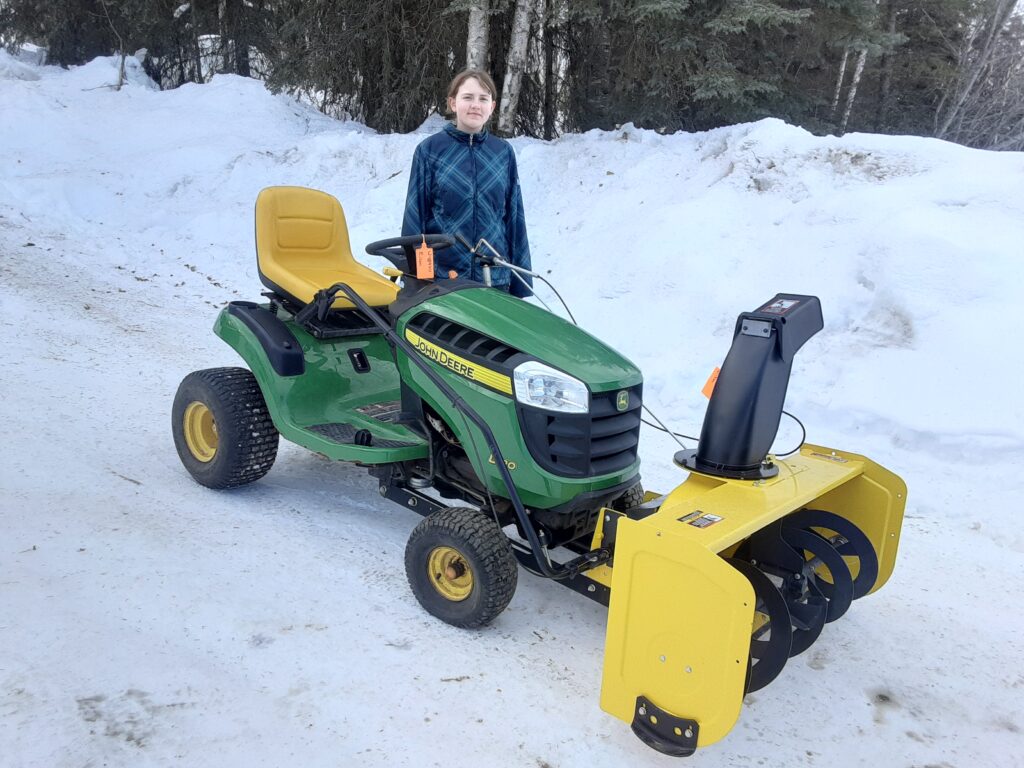
This is what you need if you live in snow country!
How we got the mower
We used to have a sizeable yard so a riding lawnmower was a “Must have” if you didn’t want to wear yourself out using a push mower once a week. Originally, I inherited a Toro riding mower when my grandpa passed so we used it for many years until the deck rusted out causing the whole blade assembly to fall through onto the ground while I was mowing the yard. The replacement deck cost more than a new riding mower so buying a new one instead of fixing it was a no brainer.
I wanted one that was greaseable with common easy to find parts so that narrowed the search down to a few brands. We decided on the John Deere D120 after looking at different mowers as the John Deere parts were readily available and everything had grease zerks so it could be maintained to keep parts from wearing out as fast. The blade spindle bearings were even greaseable so that would have prevented all the problems if the Toro had zerks. I guess you don’t make extra money later if you have serviceable parts. The John Deere dealer had the best buy on it along with low interest rate credit, so we bought it there. We used it for pulling the small trailer around for bringing up firewood in addition to just mowing.
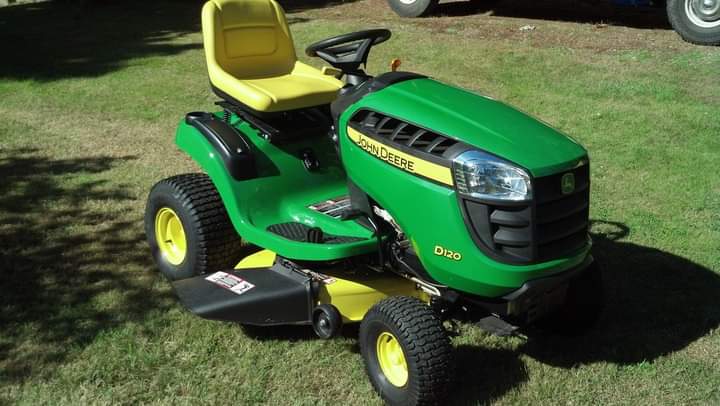
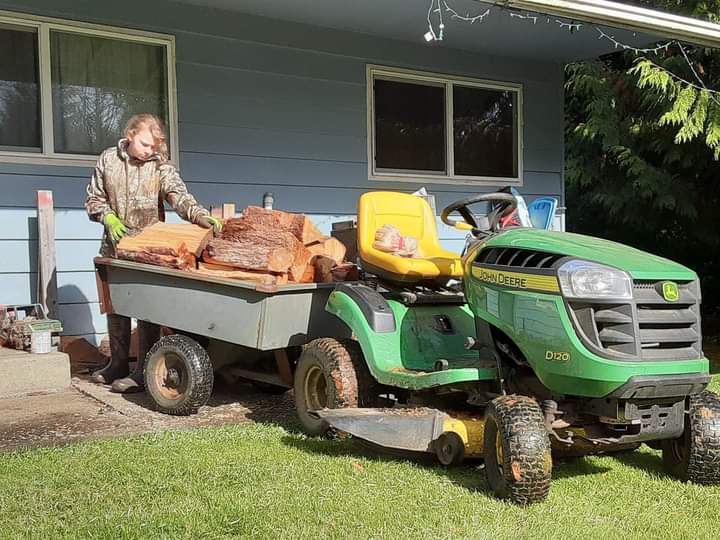
Hauling it to Alaska
We didn’t have a house to go to in Alaska when we moved so we brought the mower with us up the Alaska Highway on the car trailer just in case we did find a house with a lawn. I’m not sure how many John Deere mowers traveled the Alaska Highway, but ours did. It was a spendy item and I figured I would convert it to a riding snowblower if we bought a house that didn’t have a lawn. It didn’t have many hours on it, so it was still virtually brand new.
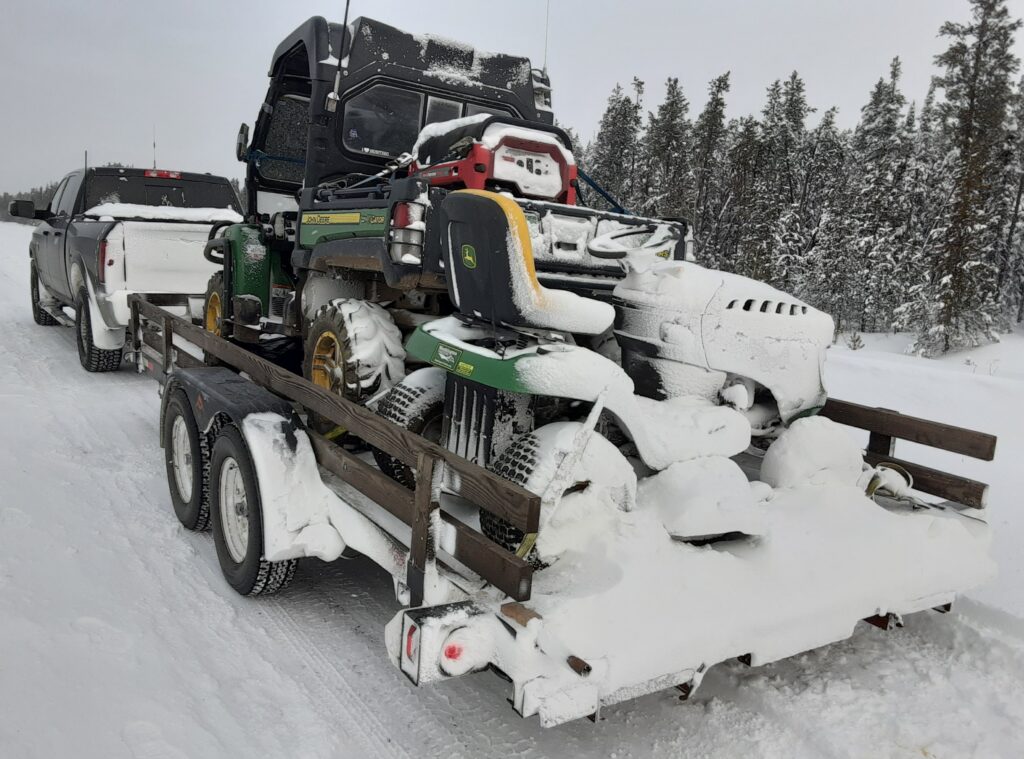
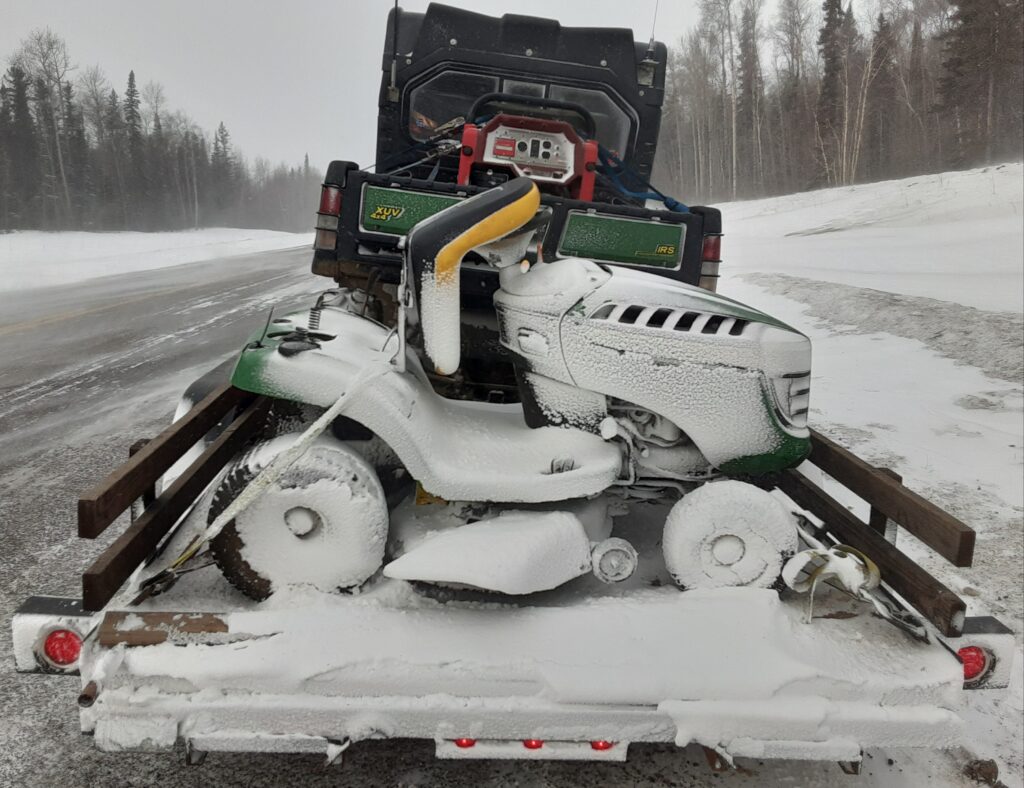
The Conversion
As luck would have it, we bought a house on just under 2 ½ acres that did not have a lawn. Inflation had taken its toll on snowblower prices by that time, so I began researching different options as well as searching for used ones. I found many John Deere forums that said the older John Deere 44” snowblowers were way better and more heavy duty than the new 44” model so avoid the new ones if possible. I had given up the idea of getting a new one after seeing the same sentiment about the newer snowblowers and was ready to get a plow for our John Deere Gator instead. We stopped at the local John Deere dealer to price out the plow for the Gator and the salesman said that they had just found a new “old stock” 44” snowblower. Apparently, it had been hidden behind some old trade-in equipment and brush so it was a brand new old model that he offered to sell us at used price just to get it out of their way. Of course, we took that offer and dropped our mower off so they could install it.
The parts shortage due to all the Kung Flu stuff caused the install to be delayed a long time waiting for replacement missing parts that had been misplaced over the years that the snowblower had been hidden. Of course, we had a few heavy snowfalls where we could have really used that snowblower. We impatiently waited as there was nothing else that we could do. I finally got the phone call that it was ready so I picked it up and brought it home. I installed a pair of two-link tire chains on it to help with traction on the ice. Two-link chains have a cross chain attached to every second link whereas four-link chains have a cross chain on every fourth link so the two-link provides better traction on these smaller tires. The weather warmed up and the snow starting melting so I began to wonder if I would be able to try it out before next winter. It was March in Alaska and we didn’t get any measurable snowfall so I was actually disappointed. We got three-feet of snow during the week when the oldest two kids came up to visit in December but not a whole lot after that so I began thinking that the snowblower had jinxed us.
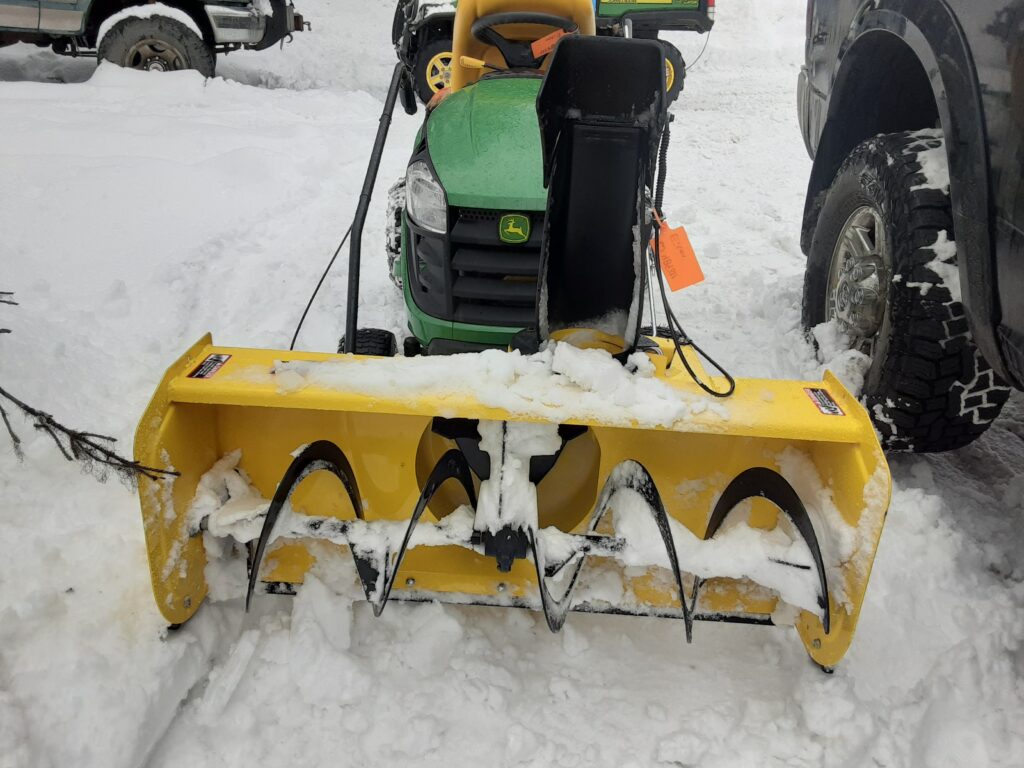

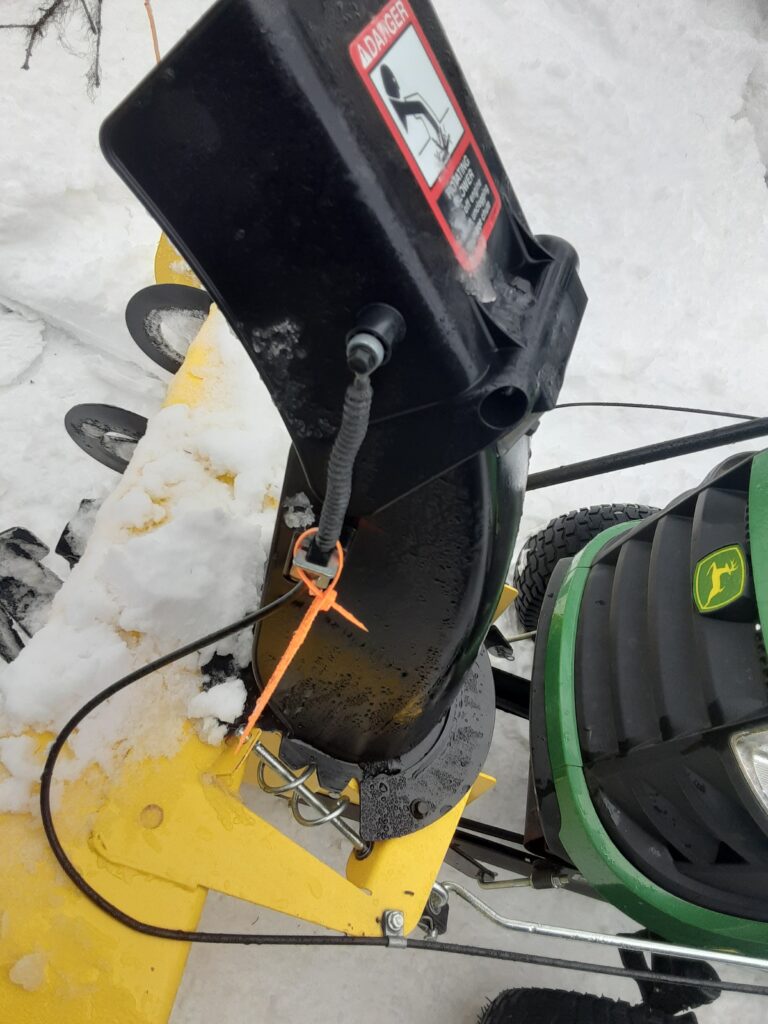

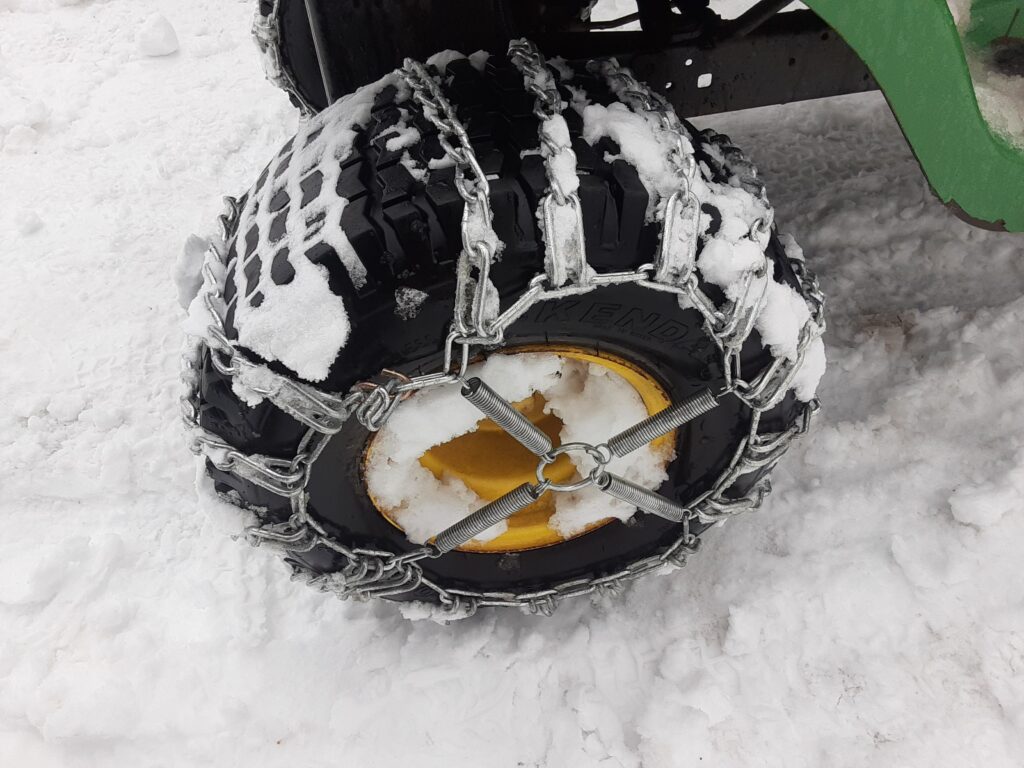
Trying it out,,, Finally!
It finally snowed a foot in April so we got to try it out after a long wait. I tried it when there was only about 8” and then went over it again after the last 4”of snow had fallen. It cut through the snow with ease and threw it about twenty-five feet so it was impressive just as the people on the forums had said. The chute is adjustable for the discharge angle and height so it was easy to use. We have about 200 feet of driveways and over 50 feet of walkway so a riding snowblower was way easier than shoveling. It did take some learning on how to do the hilly areas and I found that several short forward and reverses into the snow helped keep the tires from spinning. I also found that you do have to add weights to the rear of the mower to help with traction. We did not buy those as we have a welder, scrap steel, and a pile of bricks that we can paint John Deere Green for way cheaper than the dealer’s painted iron weights. Overall, I was impressed with how fast it removes the snow and how far it throws it. Plows might be faster, but the driveway gets narrower and narrower so a snowblower keeps the entire driveway width clear.
The riding snowblower also makes it easier for anyone in the house to clear the snow when needed. This is definitely a must have conversion if you live in a snowy area like we do in Alaska. The mower has a larger engine than the walk behind snowblowers do so it is at least three times faster. Speed might not seem like much of an issue, but you will appreciate the extra speed when you are clearing snow in -40 degree weather. Another tip is to back it in when you put it away so you can clear a path instead of fighting to get the snowblower pointed in the right direction before you can start. Keeping the chute sprayed with light oil to keep it from freezing in place is also another important thing to remember.